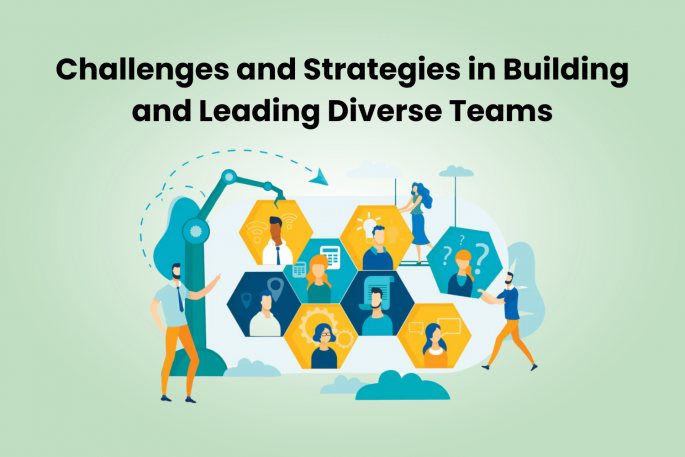Diversity is not just a moral or ethical criterion in the workplace. It is essential for achieving success in today's businesses. Diverse teams bring a variety of viewpoints that the organisations can capitalise on. This results in better innovation and decision-making. But there are challenges in developing such teams and leading them.
This blog will look at these issues and discuss methods for building and leading diverse teams. The insights can be helpful for those enrolled in Leadership Courses as they help with the improvement of the Leadership Qualities needed to manage diversity.
Table of Contents
-
Understanding the Importance of Diversity
-
Identifying Common Challenges
-
Strategies for Overcoming These Challenges
-
Implementing Best Practices for Team Building
-
Evaluating and Adjusting Strategies
-
Conclusion
Understanding the Importance of Diversity
Diversity involves more than gender, ethnicity, or age; diversity is described by attributes like educational background, cultural upbringing, religious beliefs, and professional experiences. A diverse set of views will make for a more creative and better problem-solving team. What the studies do show is that in most cases, the performance of a diverse team is better than homogeneous team's-more so when the tasks call for creativity and invention.
Identifying Common Challenges
Building a diverse workforce is just the first step. Managing diversity properly will be the actual test. Among the most typical difficulties are:
-
Communication Barriers: Language, dialect, and cultural expression disparities can cause communication problems for diverse teams. This can lead to misunderstandings, resulting in disagreements or non-aligned objectives.
-
Cultural Misunderstandings: The influence of cultural backgrounds can be a factor that leads to differences in attitudes and behaviours among team members. This is bound to cause inadvertent disrespect or conflict, unless realised with proper consciousness and respect paid to those differences.
-
Opposition to Change: There will be those in the team who would not want to change or have diversity programs on the grounds that they consider change as a threat or simply because diversity might mean more competition or threats to the group dynamics.
-
Integration Challenges: It may not be easy to ensure that each team member feels appreciated and involved. This can make the minority members feel out of place because they think they are under-represented or marginalised in their team.
Strategies for Overcoming These Challenges
Leaders can employ various tactics to address these issues:
-
Inclusive Leadership: Leaders must make diversity a priority, which entails fostering a diverse hiring process and setting up an inclusive workplace where every team member feels free to bring their unique contribution.
-
Effective Communication: Proper communication will require clear channels of communication. This means surmounting linguistic or cultural barriers by providing language support, communication via clear plain language, or visual help through pictures and demonstrations.
-
Education and Awareness Training: Continuous training on the need for sensitivity and competency in culture will help to minimise miscommunication and instil respect among team members.
-
Establishing an Open Culture: Promoting a culture where discussing differences and difficulties is acceptable, and feedback is solicited and appreciated can aid in developing respect and understanding between people.
Implementing Best Practices for Team Building
Apart from overcoming challenges, leaders can use proactive steps to build productive, diverse teams:
-
Comprehensive Recruitment Strategy: Aim to recruit from a diverse skill pool. This entails searching outside the customary hiring channels and considering applicants with a variety of backgrounds and experiences.
-
Organised Onboarding Procedures: A comprehensive onboarding procedure can help with the smoother integration of new team members. This will involve training on the values and how the organisation works, together with meet-up sessions with the rest of the team to introduce an understanding of their values and culture.
-
Frequent Team-Building Exercises: Team-building activities can be a potent force in breaking down barriers between team members while promoting trust. Members will be able to freely participate and demonstrate their talents during these inclusive activities.
-
Mentorship and Sponsorship Programs: Such strategies may generate feelings of support to the minorities in the organisation. Pairing them with senior employees gives them the required support to help them navigate their careers within the company and gain the opportunity to get the right exposure required for them to succeed.
Evaluating and Adjusting Strategies
It is of great importance that the leaders assess their programs on diversity at regular intervals for effectiveness and, wherever possible, make changes to them. This could include holding frequent feedback meetings with team members, monitoring diversity measures, and assessing the team's performance with respect to diversity objectives.
Conclusion
Although there are obstacles involved in creating and managing diverse teams, they are greatly outweighed by the advantages. Leaders may help their teams reach their maximum potential and drive their organisations toward increased success and innovation by implementing thoughtful initiatives into practice and cultivating an inclusive culture. Leadership courses evolve along with leadership qualities to meet the needs of a varied workforce. This way, novice and seasoned leaders can learn how to manage and capitalise on diversity.



























